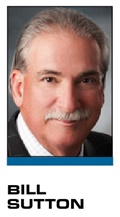While I have written about some of these thoughts previously, I thought I would compile my six best ideas and alterations for your consideration as you review your sales productivity and look to challenges in the coming year.
1. Think about Maslow’s hierarchy of needs as it relates to your sales force. The basics of the hierarchy are food, clothing and shelter. Does your compensation model allow your entry-level sales staff to address those basic needs in a timely fashion, or are they forced to take a second job to pay the bills until commissions are paid?
Having visited with hundreds of entry-level sales staffers over the years, I think you would be surprised how many bartenders and waitresses you are employing during daily business hours. In a recent presentation, Scott O’Neil, CEO of the Philadelphia 76ers, estimated that he spent $40,000 annually on snacks and beverages that are offered free to the sales staff every day. The Cleveland Cavaliers have a free soda machine, and other teams provide lunch daily or weekly. Gestures such as these demonstrate that you understand the challenges and demands of young sellers.
The next issues are growth, development and advancement. A clear career path is at the top of most millennials’ needs list. They want to understand how they can advance and how soon. Mentorship plays a key role in helping this happen. So those organizations with sales managers with a history of advocating for their employees and helping them advance their careers are most likely going to be the best recruiters.
2. Telephone calls, appointments, interactive Web pages, sampling and social media should be part of the sales mix in every organization. Technology has improved our ability to communicate using a variety of tools and methods. People, and millennials in particular, are more skilled and comfortable in some forms of communication than others. Don’t try to force everyone to do it the same way because it is easier to measure consistency and results. I have seen amazing success using LinkedIn, Facebook, Twitter and other forms of social media. I have also seen social media as a tool to set up the phone call, which then sets up an appointment followed by an opportunity to sample the product followed by face-to-face selling for the close. Send your sales force to work every day with a quiver full of arrows, not just one.
3. Fun is not only good, it is essential and expected. One of the reasons there is turnover on a sales staff is because of the grind. Even successful people leave for this reason. Sales managers need to create a fun atmosphere that complements the structure and the goals at hand. Short-term incentives, contests, trips, prizes and other forms of recognition alleviate the grind. Group competition is fun and
 |
Sixers sales rep Austin Golya works the phones as Hoopla TV displays his recent sales success.
Photo by: PHILADELPHIA 76ERS (2)
|
builds teamwork and morale. I have always enjoyed walking onto the sales floor with a $50 or $100 bill, tearing it in half, posting it on the wall and stating whoever makes the next sale of two full-season tickets or a group of 50 or more should come and see me for the other half of the bill.
4. Chief revenue officers and presidents need to visit the sales floor on a regular basis to show that they appreciate the effort and recognize those who are successful. Hoopla TV is used by a number of my clients to inform the organizational leadership of the sales activity throughout the day. Television monitors are located in the sales office, in the offices of the sales manager, CRO and president, and sometimes in reception areas or break rooms. Every seller has a “walk-up song” and when someone makes a sale their picture appears on the monitor accompanied by their theme song and what they sold. Standings are automatically updated and appear as a rotational screen throughout the day. The information can also serve as a reminder for the executive team to leave their offices and celebrate the sale with the sales team.
5. The biggest fears regarding selling are the unknown, misperceptions and self-doubt that accompany commission-based compensation. Can I survive doing this (remember Maslow)? Thus training needs to be much more than developing skills and learning subject matter — it must build confidence. The Sales Game, by the Sales Huddle Group, and the MLS National Sales Center both build confidence and increase the knowledge base — one through gameification and reinforcement, and the other through building a thorough understanding of the communication process by improving listening skills using a variety of techniques, including improvisation. These two approaches remove much of the mystery surrounding how to be successful in sales while also correcting many of the myths and inaccuracies that are based in perception, not reality.
6. Bigger can be better. During the past year, I have seen some ticket sales staff numbers grow to 70 salespeople. The ROI is in the 5-1 ratio and higher in some cases. More leads are contacted and more sales are made because of the coverage that the numbers provide. The challenges are in supervision, coaching and retention.
How do you convey personal value to a salesperson who, as one of 70, can perceive themselves as more of a number and less of a name than they might be in another organization? When the account reps are ranked, how do you convince No. 40 that he/she has a bright future and to keep working at it? Interestingly enough, both of the large sales staffs I have seen have some of the best sales and organizational cultures I have seen.
Sales managers and practices must continue to evolve and to effectively do so in 2015 and beyond, understanding both technology and generational behaviors will be the key to finding success. Routine must be replaced by situational marketing and selling.
Bill Sutton (wsutton1@usf.edu) is the founding director of the sport and entertainment business management MBA at the University of South Florida and principal of Bill Sutton & Associates. Follow him on Twitter @Sutton_ImpactU.






